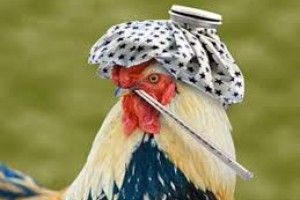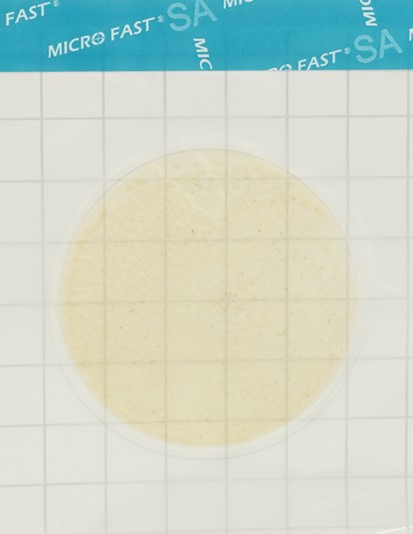Bird flu cases are falling in Europe

The assessment is also being carried out by the European Center for Disease Prevention and Control (ECDC), which is monitoring risk factors for a potential influenza pandemic and associated mitigation measures.
Experts note that they consider mink and fox, which are very susceptible to influenza viruses, to be possible factors in the spread of the influenza virus.
“Although mammal-to-mammal transmission of the virus has not yet been confirmed, wild mammals may act as intermediate hosts between wild birds, domestic animals and humans. Companion animals such as cats living in households with access to the outdoors may also be a potential means of transmission,” the statement said. — Farms in areas rich in waterfowl, outdoor farming and/or poor biosecurity may allow the virus to be introduced onto farms and spread further. Extreme weather events and climate change play an additional role in the development of the situation, as they can affect the ecology and demography of wild birds and thus influence the development of the disease over time.”
Avian influenza has been challenging farmers and the poultry sector for several years now, following outbreaks in many parts of the world.
The latest EFSA review of avian influenza (December 2023 - March 2024 ) states that between 2 December 2023 and 15 March 2024, outbreaks of highly pathogenic avian influenza (HPAI) A(H5) were reported in domestic (227) and wild ( 414) birds in 26 European countries.
However, this figure is lower than in previous years as the overall number of HPAI virus detections in birds is significantly lower, although it is still considered widespread.
EFSA and ECDC expect to publish a scientific opinion assessing the potential development of an influenza pandemic and recommendations for risk managers to reduce risks to human HEALTH by the end of 2024.
In the meantime, authorities emphasize that farms must strengthen biosecurity measures to prevent animals from coming into contact with infection.
Experts also advise increased surveillance of animals and people, as well as genomic analysis and sharing of sequence data.
In its assessment of the global poultry market last week, Rabobank cited avian influenza as an ongoing concern. Rabobank expects risks to shift to the southern hemisphere in the coming months, where more countries are turning to vaccines to protect the industry.
In October 2023, British scientists decided to fight bird flu using gene editing techniques that recognize and change parts of chicken DNA to limit the spread of the potentially deadly virus among chickens. They discovered how to limit, but not completely block, the virus from infecting birds.
Read together with it:
- Изменения в экспортном совете Воронежской области: новые участники и исключенияИз совета исключены несколько фигур, включая бывшего министра предпринимательства Геннадия Швыркова, обвиняемого в мошенничестве. «Агроэко» впервые экспортировала свою продукцию в 2020 году и в 2023 году отправила 15 тыс. тонн свинины, удвоив объем до 30 тыс. тонн в 2024 году. Компания «ЭкоНива» экспортировала в 2......
- Progress Agro presented two cloned calves in the Krasnodar region.According to Sergey Yakovenko, HEAD of the Altragene laboratory, large fetuses are a common problem in cloning, and researchers are continuing to work to reduce this risk. Previously, culture media containing bovine serum containing growth factors could contribute to increased calf weight. Now, a synthetic medium is being used, which has shown positive results. All newbornsThe calves were manually...
- Уругвай намерен возобновить экспорт мяса в МексикуОб этом глава министерства заявил в интервью агентству EFE после поездки в страну, на которую в 2024 году пришлось 3% экспорта уругвайских товаров, где он провел встречи с представителями различных органов власти в Мехико, Агуаскальентесе и Керетаро. Фратти объясняет, что «никогда не было очень значительной торговли» уругвайским мясом с Мексикой, но напоминает, что в последние годы проводились нек...
- ФАО: мировые цены на продовольствие снижаются второй месяц подрядДжим Вайкофф Среднее значение Индекса цен на продовольствие ФАО в октябре составило 126,4 пункта, снизившись с пересмотренного значения в 128,5 пункта в сентябре, что представляет собой небольшое снижение в годовом исчислении и на 21,1% ниже пикового значения в марте 2022 года. Лидером снижения стал сахар: его субиндекс упал на 5,3% до самого низкого уровня с декабря 2......
- The Russian-Serbian NIS has requested permission from the US to operate under sanctions.NIS has requested permission from the US Treasury Department to conduct operations while negotiations on a change in ownership structure are ongoing. Washington is demanding Russia's withdrawal from NIS. Serbian authorities have warned that NIS will be unable to operate without this license.Serbia's state-owned oil company (Naftna Industrija Srbije, NIS) has requested permission from the United St...






























































